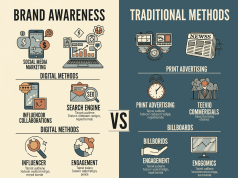Advertising is everywhere. From billboards to social media feeds, we are constantly bombarded with messages urging us to spend our money. But what drives us to make these purchasing decisions? To understand this phenomenon, we need to delve into the psychology of advertising and explore the various strategies that marketers employ to influence consumer behavior.
The Emotional Connection
At the heart of effective advertising lies emotion. Brands often utilize storytelling to create connections with consumers. This strategy taps into our feelings, making us more likely to remember the brand and feel positively towards it. For instance, many commercials evoke nostalgia or happiness, encouraging viewers to associate those feelings with their products.
The Role of Emotion in Decision-Making
Research shows that emotional responses often precede rational decision-making. When we see a commercial that stirs feelings of joy, sadness, or nostalgia, it can trigger a subconscious urge to purchase. As psychologist Daniel Kahneman points out in his book Thinking, Fast and Slow, we often rely on our intuition (system one thinking) rather than deliberate analysis (system two thinking).
The Power of Scarcity and Urgency
Another effective psychological principle utilized in advertising is the concept of scarcity. When consumers perceive a product as limited in availability, it creates urgency, prompting them to act quickly. Phrases like "limited time offer" or "while supplies last" play into this psychological trigger, making consumers fear missing out (FOMO) on a desirable opportunity.
Social Proof and Conformity
Humans are social creatures, and we often look to others when making decisions. Advertisers exploit this tendency through social proof, showcasing testimonials, expert endorsements, or user reviews. When we see others enjoying or recommending a product, we are more likely to believe it is valuable. This principle can be particularly effective in our digital age, where influencers can sway millions through their endorsements.
The Anchoring Effect
Another influencing factor in consumer behavior is the anchoring effect, which refers to the human tendency to rely heavily on the first piece of information we receive. Marketers often use this tactic by presenting an initial higher price to make a subsequent lower price seem more appealing. For example, a product initially priced at $100, then offered at a sale price of $70, can lead consumers to perceive the sale as a good deal due to the initial "anchor" price.
The Influence of Brand Identity
A strong brand identity plays a crucial role in shaping consumer perceptions. Brands that resonate with consumers’ values and beliefs often gain loyalty and trust. For instance, environmentally conscious consumers are likely to support sustainable brands. Advertisers craft their messages to align with these identities, thereby increasing the appeal of their products.
Visual Appeal
The aesthetic elements of advertising can also significantly impact our buying decisions. Colors, imagery, and design all convey specific emotions and messages. For example, warm colors can evoke feelings of excitement and energy, while cooler tones often promote calmness and trust. The visual strategy used in advertising is designed to capture attention and communicate brand values quickly.
Neuromarketing: The Science Behind Buying
The rise of neuromarketing has provided deeper insights into how consumers respond to advertising. Techniques such as brain imaging and biometric monitoring reveal how consumers’ brains react to ads. Understanding these responses can help advertisers craft messages and visuals that effectively resonate with potential buyers.
Conclusion: The Complexity of Consumer Behavior
The psychology of advertising is multifaceted, combining emotional appeal, cognitive biases, and social influences to drive purchasing decisions. As consumers, being aware of these tactics can empower us to make more informed choices. While advertising can enhance our buying experiences, it is essential to approach it with a critical mindset, recognizing the underlying psychological principles at work.
In an ever-evolving market landscape, understanding what truly makes us buy is not just beneficial for advertisers but also for consumers seeking to navigate the complexities of modern consumption. By unpacking the psychology behind advertising, we can see beyond the surface and make choices that align with our values and needs.









